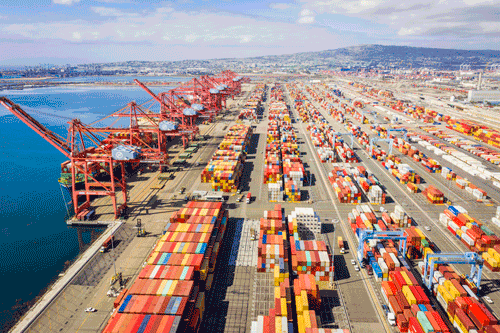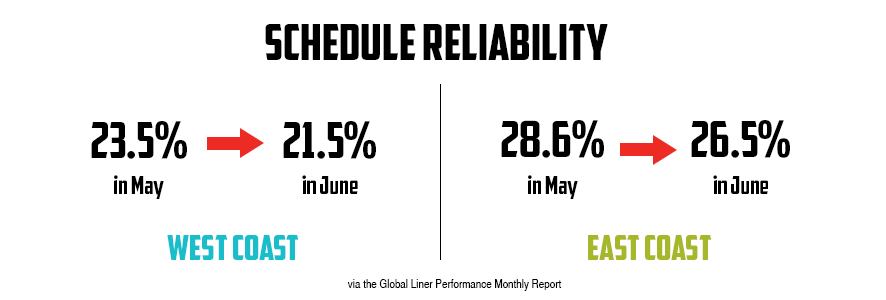Blog
Blog
Logistical Challenges: Port Congestion
SEPTEMBER 21, 2021
 |
by Kristen Stewart, Logistics & Export Specialist |
The logistics industry is facing significant challenges beyond those seen before and during the peak of COVID.
Today’s hot topic? Port congestion.
According to Suki Basi, Managing Director at Russell Group, “large demand and COVID safety protocols have created the ‘perfect storm’ at ports.”
Specifically, Basi highlights how ships are delayed entering the ports, which creates a backlog of ships that ultimately results in time lags for unloading goods.1

FreightWaves sited that, in some locations, containers sitting at ports or in terminals exceed 30 days.
Dr. Johannes Schlingmeier, Co-founder & CEO at Container xChange, identifies a “60% increase in the inbound outbound ratio at the ports of US West Coast.” The Port of Los Angeles and Port of Long Beach are experiencing excess stress, which Russell Group says could disrupt $90B in trade.1
Many customers are shifting cargo to ports along the East Coast, Gulf, or Pacific Northwest – essentially pursuing any means to maintain business viability, as seen by Craig Grossgart, SVP of Global Ocean at Seko Logistics.
However, the Global Liner Performance monthly report notes how ports along both coasts are experiencing - and expected to continue experiencing - dips in schedule reliability.1

As a result of excessive port congestion, container availability is suffering; containers are piled up at ports and inland depots, and when ships are behind schedule, many leave empty containers behind rather than wait multiple days to load them back onboard.
These growing ocean freight challenges and increasing costs have created gains for air cargo transportation as this mode is becoming increasingly cost-competitive given the spike in container shipping challenges over the recent months.
AOT Group notes where, pre-COVID, the cost of air cargo was once 12 times more expensive than ocean freight, it is now only six times more expensive. Some customers are even turning to air cargo just to ensure rapid refill of inventories as demand continues to rise.
Although air freight is experiencing it own levels of volatility, Willie Walsh, General Director at IATA believes it is much more stable in comparison to shipping.
For domestic and international shipments alike, communication with supply chain and logistic partners is absolutely vital.
To combat these challenges, international businesses, like Mitsubishi Electric Power Products, Inc. (MEPPI) must receive and provide constant updates - and adjust accordingly - when containers are scheduled for any movements and when those movements actually occur.
From altering delivery schedules to prioritizing container pulls to extending logistical partnerships, MEPPI has overcome significant transportation challenges; however, it would not have been successful without constant communication and collaborative efforts with supply chain partners.
Edited by Nicole Kristof, Digital Marketing Specialist
Stay up-to-date on industry trends & insights
Be the first notified of new blog posts
By submitting this contact form, you agree that a representative(s) of Mitsubishi Electric Power Products, Inc. (MEPPI) may contact you using the information you provided. In accordance with our Privacy Policy, we will never share or sell your personal data.